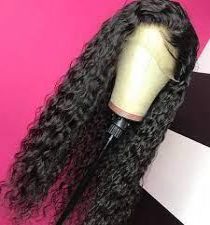A wig is an extra hair accessory made from human hair or from synthetic fiber. A wig may be used as a less invasive and less expensive alternative in medical treatments for restoring hair or for religious reasons.
Table of Contents
Types of Wigs
There are so many diverse kinds of wigs on the market that it can be problematic to decide which type is right for people. There are two types of wigs – ready-made or custom wigs.
Ready-made wigs
Ready-made wigs are standard hair systems. They are generally synthetic and size fits in all options. For a more customizable option, these units can be familiar to the wearer’s head for an upsurge in price. Because these units are not custom-made for separate clients, they tend to look a little less accurate. Though, they are generally the most affordable option.
Custom Wigs
Custom wigs are made exactly made for a client. They are usually made from lighter materials and can be more contented to wear. Because these are tailor-made, more detail can be absorbed on the front of the hairline. This is significant because the front of the hairline is careful to be the most significant part of a comely hair system. This is because the hairline can be a giveaway of a wig or a replacement system.
These can be further classified as – polyurethane, mesh, combo, and open filling units.
Polyurethane Styles
Polyurethane wigs are usually thin and pigmented. This helps them match the client’s skin tone and mixt in. This skin material is made using tapes as it is easier on the wig and helps extend the wig’s life. The comfort of poly units is not quite at the level of what you would be able to expect with a mesh unit. It tends to run hot as this base material is not as breathable. Some wearers have also stated that poly wig bases have a thicker feel and make a floating sensation over the scalp. This inclines to affect the look of the hair and can make it seem less natural.
Read Also: How to write essays correctly: how to start? The essay structure
Mesh Units
Mesh units are an overall category that is made up of full lace and single filament styles. The full lace group is made of swiss lace, glass-silk, and hand-tied systems. Monofilament material is a mixture of fine lace material, generally made of polyester or nylon mesh. Because of the sole construction of this wig type, it is great for very sensitive scalps as the top is breathable. It creates a very natural look and blends the hairs flawlessly. They can be styled in an updo or tucked behind the ears and can be parted in virtually any spot without the wig base being clear. The hairline of the wig is almost untraceable and, generally, the scalp can be seen through the mesh. This gives a lot of adaptabilities and provides a natural and authentic look. Full lace comely hair units usually have urethane strips for glues to stick to. These units are very subtle, solace tape is mild enough to use with these hair systems so they are not damaged.
Combinations
Some styles can be a mixture style that can have machine-made backs and sides, with a tied top. This is more reasonable, while still giving your clients almost all of the aids of a tied mesh unit. The structure of lace front wigs is as simple as it sounds. These styles have a light lace portion only in the front of the unit. The complete mesh base to which the separate hairs are tied is faultless for creating a natural-looking hairline. The lace sits correctly along the forehead where the hairline would be. The other parts of the unit use a thicker cap as their base. These may also have clips stitched in that help to secure it to other current hair or wig caps that might be used.
Welded Lace
Welded lace is fibers that have been firmly interwoven, forming a “joined” fabric. Welded lace is also the toughest type of lace. Trimming the lace faces on these types of units can cause them to separate and use only the correct tools suggested by the manufacturer of the wig. French comely hair-drawn units are stimulating and they are constructed using 3 layers of material. In those 2 layers of glass, silk is used, along with 1 layer of swiss lace. The swiss lace is inserted between the two layers of glass-silk and is the material that the hair will be tied to. The glass-silk above and below the bulge allows for a smooth and very comfortable wear experience. French drawn units make a very realistic and natural scalp appearance because of the covered construction that keeps the knots hidden in it.


















